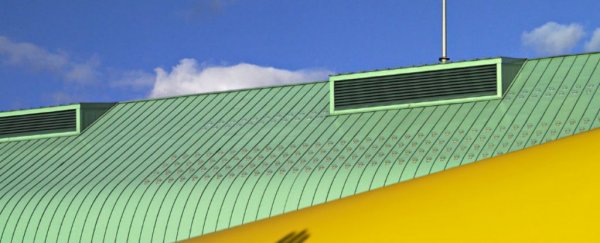The idea of kitting out rooftops with environmentally friendly gardens or solar panels has been around for some time, but an international team of scientists has hit upon the idea of carpeting roofs with plastic grass-like material instead. Each plastic blade acts as a miniature wind turbine, generating power for the home below with each gust.
The so-called turboelectric generator (TENG) uses strips of upright plastic 'grass' blades. One side of each blade is coated with nanowires while the other is coated with indium tin oxide. As the wind brushes the blades, they come into contact with each other, allowing electrons to pass from one piece of grass to the next and generating an electric current as a result.
It's known as the triboelectric effect, where contact between two dissimilar surfaces builds up an electric charge (it's the same principle that causes static electricity). The team behind the new power-generating artificial grass, from China's Southwest Jiaotong University and the Georgia Institute of Technology in the US, says it would be especially suitable in areas where the wind is often changing direction, as well as locations where windmills are impractical.
When they tested an iteration with 60 strips of plastic grass on a model rooftop, it was enough to power 60 LED lights once the blast of an electric fan was trained on them. The system can reportedly work with winds as light as 21 km/h (13 mph), while the sweet spot in terms of energy efficiency is a rather blustery 100 km/h (62 mph).
After doing the maths, the researchers predict that a 300-square-metre (3,230-square-foot) rooftop would produce about 7.11 kilowatts - almost enough energy to power a home on its own. Putting this idea into practice is still a long way off though - not only do they need to find an efficient way of storing the energy before it's used, they also need to find a replacement for indium tin oxide, which is both toxic and expensive.
"The concept is highly promising but its realisation depends on shifting to other materials," energy researcher Fernando Galembeck told James Urquhart at New Scientist.
One possible approach would be to combine the new artificial grass material with efficient solar panels on top of the building, with photovoltaic cell technology getting more advanced all the time.
The study has been published in the journal Advanced Materials.
